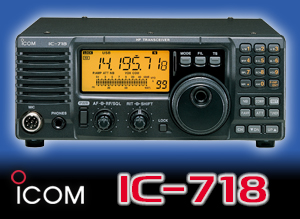Propagation News – 7 September 2025
Last week’s aurora may have come as a bit of a surprise! The propagation segment for GB2RS is usually written on a Thursday, but the aurora was sparked by a solar flare that took place two days later, at 2002UTC on the 30 August.
As we don’t have a crystal ball we couldn’t have predicted it!
The Kp index hit 3 late on the 1 September, with aurora visible over much of the UK. HF propagation was affected with sudden swings in the maximum usable frequency over most of the day on Tuesday 2 September.
At the time of writing, a geomagnetic storm watch remains in effect with the solar wind speed above 500 kilometres per second. September is a good month for aurora due to the Russell-McPherron effect, when the Earth’s axis aligns perpendicularly to the Sun-Earth line during the equinox. This creates ideal conditions for a reconnection between the solar wind and Earth’s magnetic field. So, keep an eye on solarham.com for daily updates.
The Sun remains active with plenty of sunspots. The solar flux index stood at 187 on Wednesday the 3 September, down from 202 the day before.
HF propagation remains good, out of the auroral periods, and as we progress into September it should improve even more. Some of the best DX this week included VK2/SP9FIH on Lord Howe Island using the Superfox FT8 mode, and T30TTT on Western Kiribati using both CW and FT8. Other choice DX included 3C3W in Equatorial Guinea on FT8, TJ1GD in Cameroon on 20m CW, and 5H8HZ in Tanzania on 30m FT8.
Next week NOAA predicts the solar flux index will decline to 160, and then perhaps 125. Unsettled geomagnetic conditions are forecast until the 10 September, with a maximum Kp index of 4 predicted. This may be due to a large elongated coronal hole on the Sun’s surface which became Earth-facing on Wednesday the 3 September.
VHF and up
Rain and sequences of low pressure will drive the weather agenda for much of the coming week.
The only reasonable chance of Tropo appears to be Friday and Saturday with high pressure to the southeast and support for paths to the continent and across the North Sea. It is worth noting that, in general, short-lived highs like this one do not have the necessary time to generate a strong, elevated inversion before declining. So don’t expect too much.
Rain scatter, on the other hand, is much more likely to be worth considering for the gigahertz stations next week, with plenty of rain events coming along.
The Sporadic-E season daily blogs have now finished for this year, but you may still find it worthwhile looking at the Dourbes graph at propquest.co.uk You will notice the odd blip on the foEs trace, so keep it in mind for the 10 and 6m bands – at least for the next week.
Meteor scatter is still in random territory for this period. We are between the Perseids in mid-August and the Draconids which peak on the 8 October. This means that the pre-dawn morning hours will be good times to try.
There were some auroral signals during the 2m UK Activity Contest on Tuesday 2 September. We are coming into the autumn season when conditions tend to be more favourable for aurora.
The message is, of course, to monitor the Kp index for values rising above 4 or 5. Remember these three-hourly planetary readings can smooth out shorter duration peaks, so maybe don’t wait for it to get to the dizzy heights of 6 or 7 before taking an interest.
Moon declination is still negative, not going positive until Monday 8 September. So, Moon window lengths and peak elevation will continue to increase. Path losses are still falling until perigee on Wednesday the 10 September. 144MHz sky noise is low all week.
Category: GB2RS Propagation News











